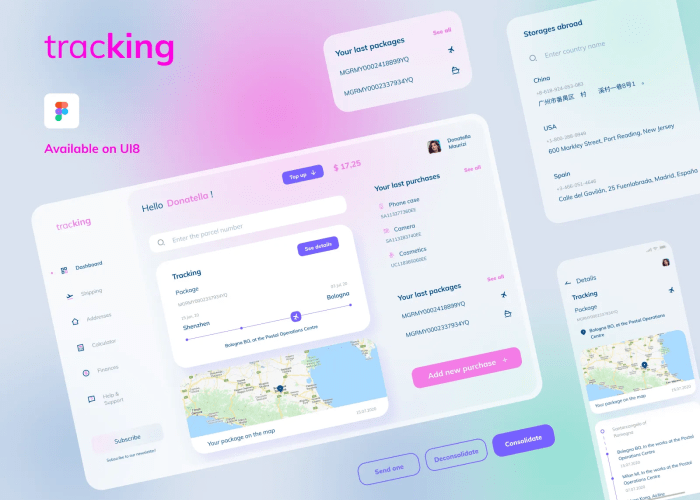Introduction to Tracking Apps
Tracking apps have become increasingly popular, offering a wide range of functionalities to monitor various aspects of our lives. From fitness and location to productivity and finances, these apps provide valuable data and insights to help us stay organized and achieve our goals. Understanding the different types of tracking apps, their common features, and the importance of user-friendliness is crucial for choosing the right app for your needs.
Types of Tracking Apps
Tracking apps cater to diverse needs. Location tracking apps allow users to monitor their movements, share their location with others, and utilize features like geofencing. Fitness apps track physical activity, heart rate, and sleep patterns, providing personalized insights into fitness routines. Productivity apps help manage tasks, time, and resources, enabling users to improve efficiency and focus. Financial tracking apps help monitor spending habits and manage budgets, while many other niche apps track aspects like health, diet, and more.
Common Features
Across various categories, tracking apps often share common features. These include data visualization tools, customizable dashboards, progress tracking, notifications, and integration with other apps. User-friendliness is paramount, with intuitive interfaces and clear instructions essential for successful adoption and usage.
User-Friendliness
A user-friendly interface is critical for a successful tracking app. Clear layouts, simple navigation, and intuitive controls are essential for easy usage. Easy-to-understand data visualizations, customizable dashboards, and personalized notifications are all key aspects of user-friendly design. These aspects greatly influence user satisfaction and long-term adoption.
Examples of Popular Apps
- Location Tracking: Google Maps, Waze
- Fitness Tracking: Fitbit, Strava, Nike Run Club
- Productivity Tracking: Todoist, Asana, Trello
- Financial Tracking: Mint, YNAB, Personal Capital
Comparison of Key Features
| Feature | Location Tracking (Google Maps) | Fitness Tracking (Fitbit) | Productivity Tracking (Todoist) |
|---|---|---|---|
| Data Visualization | Maps, routes, and location history | Graphs of activity, heart rate, and sleep | Task progress bars, calendar views |
| Customization | Customizable layers and map styles | Personalized activity goals and tracking | Customizable task lists and priorities |
| User Interface | Simple and intuitive map interface | Easy-to-read graphs and data displays | Clean and organized task management system |
User Needs and Preferences
User choices for tracking apps are influenced by individual needs and preferences. Understanding these factors is vital for developing effective and engaging tracking solutions. Customization options, data visualization, and app interface design play a crucial role in user satisfaction.
Factors Influencing User Choice
- Personal Goals: Users choose apps aligned with their fitness, productivity, or financial objectives.
- Data Visualization Preferences: Different users prefer different ways to view and interpret data.
- Integration with Existing Systems: Seamless integration with other apps and devices is a key consideration.
- App Performance and Reliability: Users seek apps that are fast, responsive, and reliable.
Different User Needs and Expectations
Users have varying needs and expectations. Some prioritize detailed data, while others seek simple, straightforward tracking. Customization options and personalized dashboards are crucial for meeting these diverse requirements.
Importance of Customization
Customization allows users to tailor the app to their specific needs. Adjusting data fields, setting notifications, and personalizing dashboards enhances the user experience.
Data Visualization Approaches
Different apps employ various data visualization techniques. Charts, graphs, and maps are common, with varying levels of complexity and detail. Effective visualization is crucial for understanding and interpreting tracked data.
App Interface Comparison
| Interface Element | Pros | Cons |
|---|---|---|
| Simple, clean design | Easy to navigate, user-friendly | Potentially lacks advanced features |
| Detailed, complex design | Offers extensive features and data insights | Can be overwhelming for some users |
| Interactive elements | Engaging and informative | May distract or confuse some users |
User-Friendly Design Elements
User-friendly design elements include intuitive navigation, clear labels, and easily accessible settings. Well-organized dashboards, concise summaries, and helpful prompts contribute to a positive user experience.
Features and Functionality
Top-rated tracking apps boast core functionalities that cater to various user needs. Tailoring features for specific use cases is crucial, ensuring the app meets its intended purpose. Robust data security and privacy measures are essential.
Core Functionalities
- Data Collection and Storage: Accurate data capture and secure storage are paramount.
- Data Visualization: Clear and insightful presentation of collected data.
- Customization Options: Allow users to personalize dashboards and tracking parameters.
- Integration with Other Apps: Seamless connection to other apps for enhanced functionality.
Must-Have Features
- Data Security and Privacy: Robust security protocols to protect user data.
- Data Accuracy: Ensuring precise data collection and reporting.
- Regular Updates and Bug Fixes: Ongoing maintenance to address issues and improve functionality.
- User Support and Documentation: Helpful resources for users.
Data Security and Privacy
Protecting user data is paramount. Secure storage, encryption, and compliance with data privacy regulations are critical.
Data Collection and Reporting
Accurate data collection and insightful reporting are essential for effective tracking. Clear and understandable reports help users make informed decisions.
Data Storage and Backup Options

| App | Storage Options | Backup Options |
|---|---|---|
| App A | Cloud storage, local storage | Automatic backups, manual backups |
| App B | Cloud storage | Automatic backups, no manual backups |
| App C | Local storage only | Manual backups only |
Final Conclusion
Ultimately, choosing the best tracking app is a personal journey. This guide has provided a framework for understanding the various facets of tracking apps, allowing you to consider your specific needs and preferences. By carefully evaluating factors like user-friendliness, performance, features, and value proposition, you can confidently select a tracking app that aligns perfectly with your goals and enhances your overall experience.




